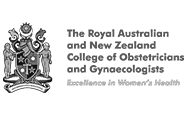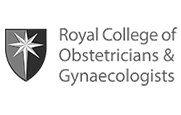Vaginal Prolapse Surgery
What are the different types of vaginal repair for prolapse?
Prolapse is a condition where pelvic organs such as the uterus, bladder, bowel and vaginal wall, drop due to the weakened support of muscles, ligaments and fascia. The main cause of prolapse is pregnancy and vaginal childbirth. It is a common condition that affects 1 in 3 women and 1 in 10 women will require surgery in their lifetime. Approximately one third of patients undergoing prolapse surgery will require further surgery for recurrence of prolapse.
The severity of prolapse can be determined based on how far the organs have dropped. Grade I is mild and usually asymptomatic; Grade II is moderate and is when the prolapse reaches the vaginal opening, often at which is the point where it becomes symptomatic and noticeable; Grade III is when the prolapse protrudes well beyond the vaginal opening, and; Grade IV when the vaginal canal is completely everted.
Prolapse can also be categorised based on its location: anterior vaginal wall prolapse, posterior vaginal wall prolapse and uterine or vaginal vault prolapse. These three types of prolapse are commonly referred to as anterior, posterior and middle compartment prolapse, with women often experiencing a combination of the three. Vaginal repair surgery for prolapse depends on the type/s of prolapse and may consist of combination of the following:
- Anterior vaginal wall prolapse:
- Anterior vaginal repair
- Posterior vaginal wall prolapse:
- Posterior vaginal repair
- Uterine / vaginal vault prolapse:
- Vaginal hysterectomy with Sacrospinous Ligament Fixation
- Sacrospinous Hysteropexy (preservation of uterus)
- Robotic / Laparoscopic Sacrocolpopexy: For more severe prolapse.
Anterior vaginal repair
The classical anterior vaginal repair, also called anterior colporrhaphy, is now commonly referred to as a native tissue suture repair. This is to distinguish them from the previously used vaginal mesh-kit procedures, which caused many complications and are now no longer used. Anterior vaginal repair involves an incision on the anterior vaginal wall to expose the weakened underlying fascia, which is then repaired by a series of delayed absorbable sutures. The overlying vaginal wall is sutured with an absorbable material. A gauze pack is often placed in the vagina for one night post-surgery to provide pressure and minimise bleeding. The reported success rate of an anterior vaginal repair is between 50-60%.
Posterior vaginal repair
Classical posterior vaginal repair, also called posterior colporrhaphy or colpoperineorrhaphy if perineum reinforcement is needed, is performed in a similar fashion to that of anterior vaginal repair. The main difference is that additional sutures are often required to reinforce the perineal body at the lower aspect of the posterior vaginal wall. The reported success rate of a posterior vaginal repair is higher than that of an anterior vaginal repair, ranging from 60-70%.
Vaginal hysterectomy with Sacrospinous Ligament Fixation / Sacrospinous Hysteropexy
When the uterus is significantly prolapsed and there is no further desire for pregnancy, it is often removed as surgical treatment. However, the uterus can be preserved according to patient desires.
When uterine prolapse is severe enough to cause symptoms, the upper part of the vagina, often called the vaginal fornix, is also prolapsed. Therefore, following the removal of a prolapsed uterus through a vaginal hysterectomy, the upper vagina needs to be resuspended. This is typically carried out by performing a concurrent sacrospinous ligament fixation. In less severe cases, a uterosacral ligament suspension may be sufficient to elevate the top of the vagina following a vaginal hysterectomy.
When the uterus is to be preserved, a procedure similar to sacrospinous ligament fixation of the vaginal fornix can be performed. In a sacrospinous hysteropexy however, it is not the vaginal fornix that is sutured to the sacrospinous ligament but rather the cervix.
What are possible complications from vaginal repair surgery?
In addition to the general risks associated with any surgical procedure such as reaction to anaesthesia, infection, bleeding, risk of injuring neighboring structures and blood clots forming in the leg that may travel to the lungs, the specific risks pertaining to prolapse repair surgery include:
- Surgery not being successful 20-40%
- Urinary tract infection following surgery 5%
- Urinary frequency and urgency, often temporary 2-5%
- Urinary incontinence following surgery 2-3%
- Voiding problems that are often temporary 2-5% - rarely requiring a catheter for few days
- Altered bladder sensation with reduced sensation of bladder filling 2%
- Injury to adjacent organs such as bladder or bowel 1-2%
- Painful intercourse 5%
What to expect when recovering from vaginal repair surgery?
The time it takes to recover from vaginal repair surgery varies for each individual and can range from 2-5 weeks. Following surgery, there will be postoperative pain which should be adequately managed with oral painkillers. Regular use of painkillers as required is encouraged, not only to reduce discomfort, but also to facilitate early mobilisation. Physical activity plays an important role in minimising postoperative complications including the formation of blood clots in the leg and chest infections. Recovery will also be faster with early resumption of physical activity.
As your body expends a lot of energy whilst healing internal wounds, it is very common to feel lethargic and easily fatigued for a number of weeks. You will fully regain your energy and stamina over time.
There are no dietary restrictions post-surgery however the bowels often slow down for a brief period of time due to the pain medications and decrease in physical activity. One is therefore encouraged to maintain a high fiber diet with adequate hydration in order to avoid constipation. A 6 week prescription for laxatives such as Normacol will be provided to prevent constipation.
There will be vaginal discharge for up to 4 weeks following the procedure and there may be a slight increase in the amount around 7-10 days post-surgery due to release of some liquefied blood. This is a normal and expected progression of recovery however there is a small chance of infection which can cause symptoms such as heavy bleeding or discharge, pain and fever. You should contact your doctor promptly if this occurs as it may require antibiotic treatment.
After 4 weeks of recovery, you should be able to return to work. Heavy lifting, strenuous physical activities and sexual intercourse should be avoided for 3 months.
Helpful Links
Patient information from the International Urogynecological Association















